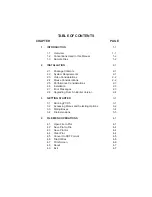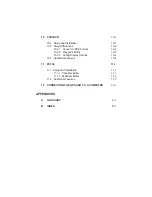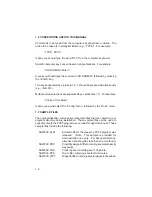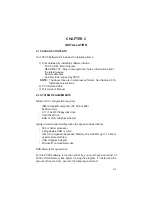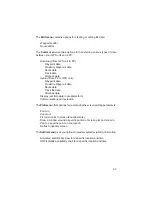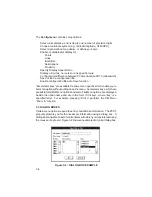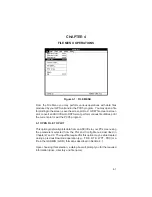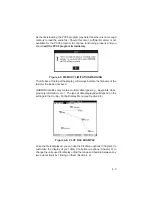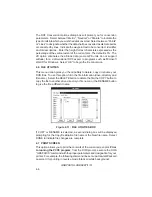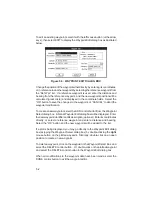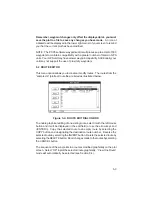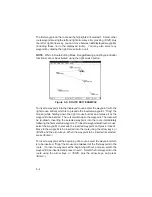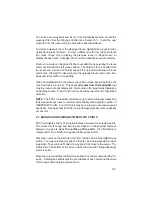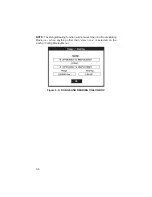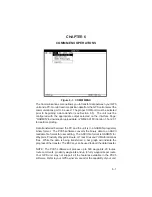
3-5
You may move within a dialog box using one of the following methods:
· Keyboard - Use <Tab> to cycle through the various selections;
<Shift+Tab> will move your cursor in the opposite direction. Within
a list box (e.g., a list of files or directories) or inside a group of option
buttons, use the arrow keys to move among the options.
· Mouse - Move the screen pointer to the desired area and click the
left mouse button.
Within a list box, with the mouse double-click the left button on the desired
file or directory. Without a mouse, use the tab and arrow keys to highlight the
desired file or directory, press <Enter> to display that selection in the File
Name box, tab to the “OK” control button and press <Enter> (or press
<Alt+O>).
To select an option button within a given group, move the screen pointer
to the button which you want to “set” using <Tab>, or use the mouse to move
the pointer to the desired button, and click the left mouse button.
Once the appropriate selections/entries have been made, move the cursor
to the “OK” control button and press <Enter>, or use the mouse to select the
“OK” button with a single left-button click. This will cause the chosen menu
operation to begin execution. To exit the dialog box without beginning
execution, select the “CANCEL” control button (or press <F3>).
3.4 FILE EXTENSIONS
As data is transferred between the GPS unit and a PC, five types of ASCII
data files are used, each denoted by a different file extension:
.TRK -- Track File
.RTE -- Route File
.WPT -- Waypoint File
.PRX -- Proximity Waypoint File
.ALM -- Almanac Data from unit (“YUMA” format)
.CHK -- Checklist File (PC150 Only)
.SCH -- Schedule File (PC150 Only)
Data that is created or modified on the PC will be saved to a sixth type of file:
.GRM -- GARMIN Format File
The formats of these files are detailed in Sections 6.1 and 6.2.

